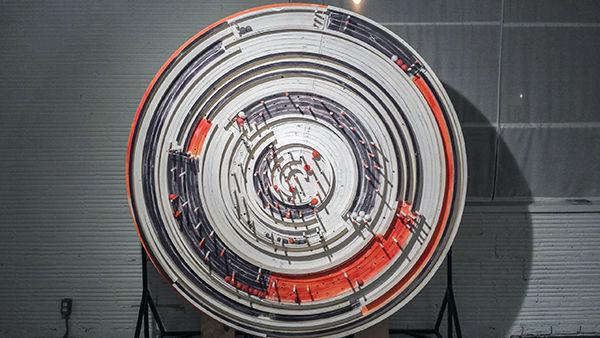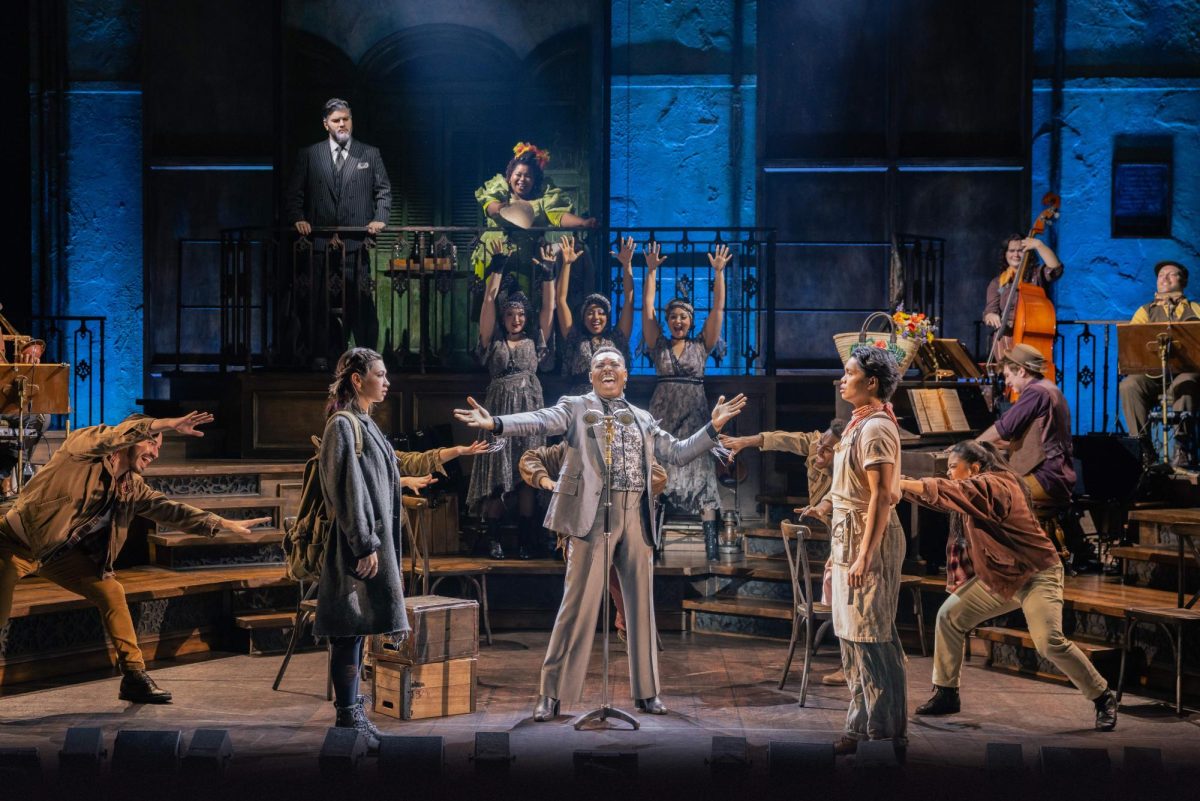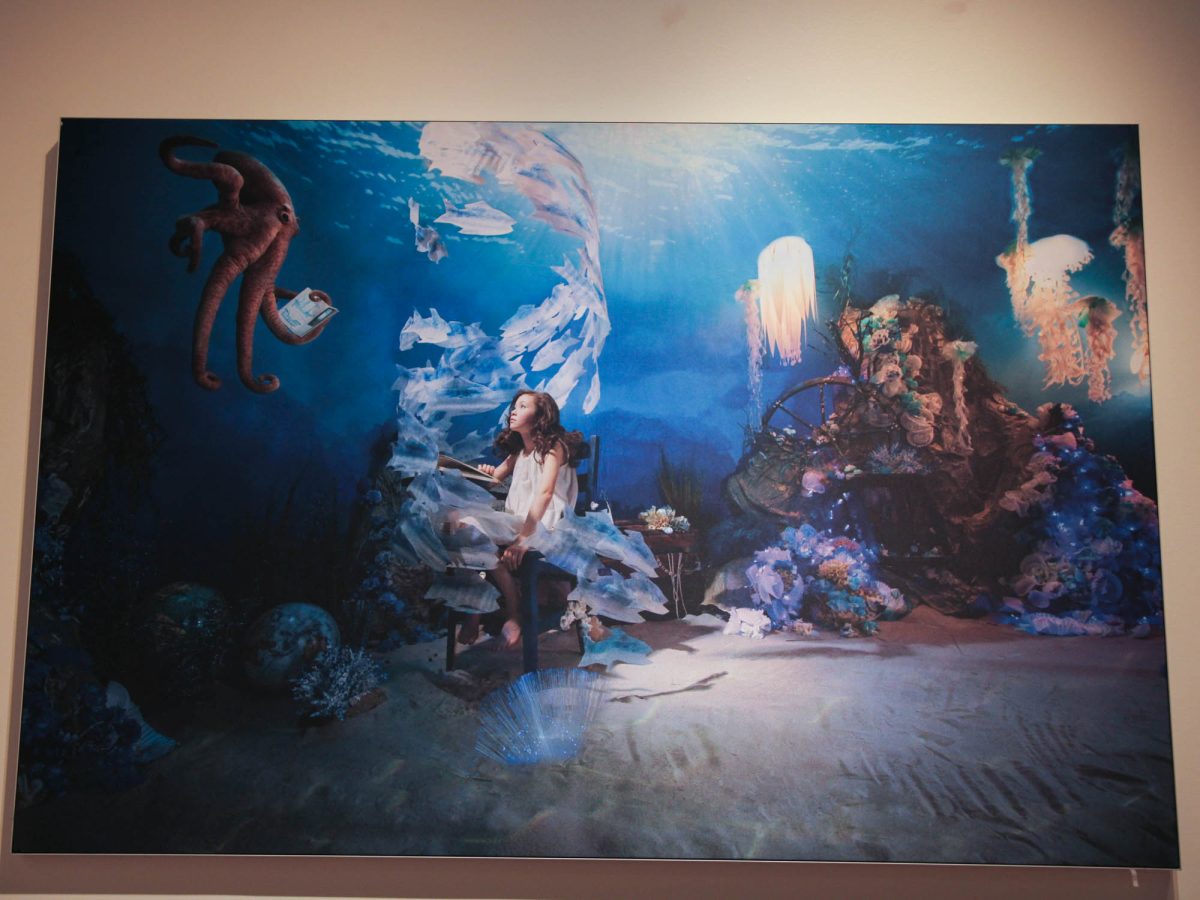The Battalion reporter Amanda Talbot sits down with visualization and multimedia professor Sherman Finch, who has an interactive art piece on display at post-studio projects in downtown Houston. The piece will be on display until after a reception at 6 p.m. Feb. 7.
THE BATTALION: How would you describe your “Symphonic Infinitum” piece in Houston?
FINCH: The work is just, it’s like an assemblage kind of hybrid artwork that basically is kind of seeking to explore what we know, perceptually visualize and then what we perceptually hear. Basically it kind of stems from a passion that I’ve had for a long time of sound and especially also of an affection that I’ve had for artists like John Cage. Even the body of work actually kind of comes from a statement that John Cage said, which is basically if you develop an ear for sounds that are musical it is likely that you’re going to start to develop a kind of preconception or an ego and in doing so you start to refuse the sounds that are not musical and then cut yourself off from these different experiences that you can have in the world, and I find that fascinating. It kind of takes me back to those days of when you’re a young kid running down the street with a stick and, you know, letting it basically go off the fence posts and hear that rattling that starts to happen. This kind of seeks to explore that, but also gets into it from not just a visual idea but also touches on a lot of conceptual art and the way that we look at conceptual art and the way we interact with conceptual art. Also kind of invites the viewer to come and play a part of it as well. So they can kind of walk to these pieces and basically spin them and they range from basically simple interactions and then kind of build up to this very immersive experience that can happen.
THE BATTALION: Do you typically create pieces that require physical participation on the viewer’s part, or is this new for you?
FINCH: I would say that there are parts of this work that are definitely new for me, that even a little bit of the process which I kind of call a fabrication process, but I am not a newcomer to this type of work — this is work that grew out of an affection that I had toward sound and I’m also a musician, maybe I should say frustrated musician. But I had much more of an affinity toward art and a lot more success in that area. So this great desire to want to put these two things together has kind of become that mother of necessity or something like that. I’ve been, throughout my body of artwork, have been doing things like this. I have been experimenting with getting the viewer to participate.
THE BATTALION: What do you mean by fabrication process?
FINCH: The fabrication process is basically kind of like bringing in industrial ideas and engineering ideas and that kind of falls outside of my realm of expertise, so in a way even though the vision of the work is coming from one person, I’ve been collaborating with certain individuals so that I could get certain aspects of the pieces created. I’ve worked with a lot of fabrication labs in helping to develop this work, but then after everything being put together, the painting and the designing of it is all coming from me. There’s working with the different types of fab labs that I’ve had the opportunity to work with, which has been great. One of the fab labs being the digital fab lab and Chris Polk. And there’s another one that’s downtown, which is the TXR and there’s another one in Alfred in upstate New York.
THE BATTALION: What do you hope to accomplish through visitor participation?
FINCH: What I hope to accomplish is just to engage the viewer, see them interact with the work and get to kind of see how they, you know, explore these new ideas, these new experiences. Really it’s a lot about exploration. I get to kind of view human nature in a way. You know what happens when they’re confronted with something that’s very simple in nature and very simple in form and yet it’s mechanics. Watch them witness the mechanics of it. I get the joy out of seeing people play. I myself, obviously, that’s where I’m putting myself. I am even really curious to how people are going to react to the work and I have been bringing people to the studio to kind of see how they react. And there’s all these different reactions. Some people get really floored by their work or they run away — it’s just too much for them. You hope that people get a specific walk away from the work, but I feel like I have my intentions of why I made the work even for myself, you know, my love of both art and both science and technology and that interplay there and kind of being really able to kind of step outside of what I see as the normal way of building art and I’m trying to really explore that and I want to share that. But that doesn’t mean that everybody is going to accept your point of view, but it’s not going to stop me from exploring it. I’m just fascinated by it. I want to keep on going.
THE BATTALION: Is exploration your goal of this piece?
FINCH: Yeah, it’s a lot about exploration. Where are we? How can the mind perceive or catch movement and then from there where does the mind pick up on sounds that are happening? And in this work there are sounds that are happening both acoustically and then there are sounds that are happening digitally and that’s kind of like a little secret that we’re keeping from people — away from the viewer. Because there are electronics that are in the back that are also playing an interesting role in the work itself by sensing and monitoring when the ball is knocked into themselves and then sending signals in different places to different speakers.
Prof explores art through music, science and technology
February 1, 2015

PROVIDED
Sherman Finch’s piece wilbe on display until Feb. 7.
0
Donate to The Battalion
$1765
$5000
Contributed
Our Goal
Your donation will support the student journalists of Texas A&M University - College Station. Your contribution will allow us to purchase equipment and cover our annual website hosting costs, in addition to paying freelance staffers for their work, travel costs for coverage and more!
More to Discover









